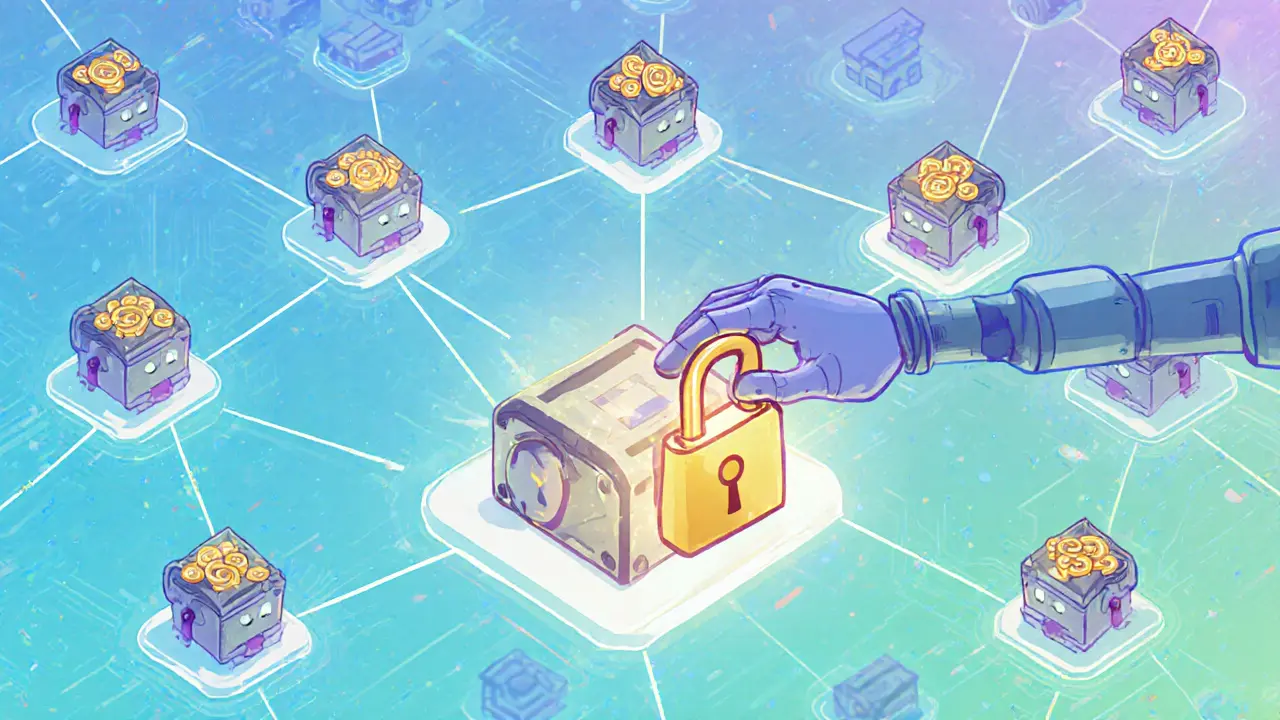When working with validator networks, groups of nodes that verify transactions and keep a blockchain honest. Also known as validator sets, they are the core of any proof‑of‑stake system and the reason you can trust a decentralized ledger without a central authority.
Proof of Stake, a consensus model where participants lock up tokens to earn the right to validate blocks shapes how validator networks operate. The more tokens you stake, the higher the chance your node gets picked to propose the next block. This creates a direct link between economic stake and network security – the network only works if validators have something to lose. In other words, validator networks encompass staking mechanisms, and the whole system hinges on the amount of capital validators commit.
Node Operators, individuals or entities that run the hardware and software needed to participate as validators are the human side of the equation. They must maintain reliable uptime, monitor performance, and manage key security practices. If a node goes offline, the network penalizes the operator by slashing a portion of their staked tokens, which incentivizes high‑quality operation. This is why validator networks require node operators who understand both networking and crypto economics.
Another essential piece is Blockchain Consensus, the set of rules that determine how a network agrees on the state of the ledger. Proof‑of‑stake is just one type of consensus, but the concept also includes finality gadgets, voting mechanisms, and fork‑choice rules. Together, consensus protocols and validator networks create a feedback loop: the protocol defines validator rewards, and validators enforce the protocol by voting on blocks.
Because validators lock up tokens, token economics play a big role. Token Vesting, the schedule by which newly minted tokens become claimable helps prevent sudden supply shocks that could hurt a validator’s stake value. Proper vesting aligns incentives, ensuring that long‑term participants stay motivated to protect the network. This ties directly into why many of our articles discuss token vesting, staking yields, and the balance between reward and risk.
Security isn’t just about numbers; it’s also about decentralization. A healthy validator network spreads stake across many independent operators, reducing the chance that a single party can control the chain. Our guide on cross‑protocol integration shows how different blockchains can share validator sets, enhancing resilience while still keeping each network autonomous.
Performance metrics matter, too. Tools that estimate transaction fees, like the ones covered in our fee estimation article, help validators price their services and keep the network affordable for users. Likewise, understanding block time – the interval between blocks – informs how quickly a validator can earn rewards and how fast transactions confirm.
Regulatory environments also influence validator networks. For example, the recent crypto consumer protection laws in Australia affect how validators must disclose staking services, and the licensing requirements in Dubai shape which entities can legally run validator nodes. Our coverage of global regulations provides context on how legal frameworks can either foster or hinder validator participation.
All these pieces – staking, node operation, consensus, token economics, decentralization, performance tools, and regulation – interlock to form a robust validator network. When you grasp how they fit together, you can evaluate any blockchain’s security posture with confidence.
Below you’ll find a curated collection of articles that dive deeper into each of these topics, from hands‑on reviews of DEX platforms that rely on validator sets to detailed breakdowns of fee estimators and token vesting schedules. Whatever your experience level, the insights here will help you understand, assess, and perhaps even join a validator network yourself.

Explore how validator networks power modern blockchains, their current landscape, challenges, and future trends, plus practical ways to start staking today.